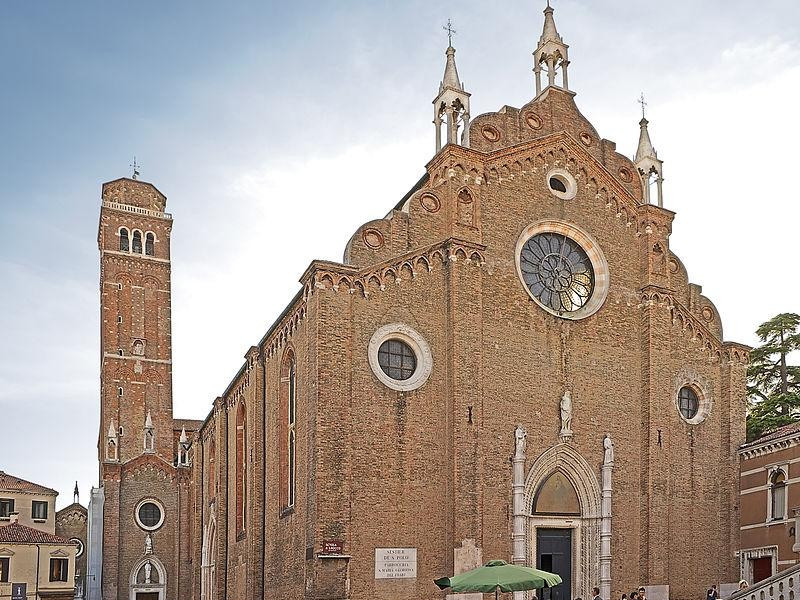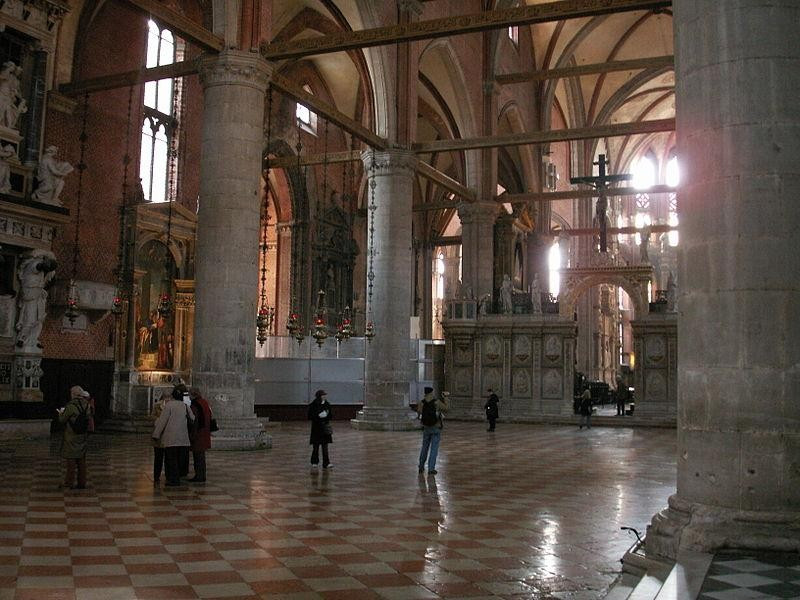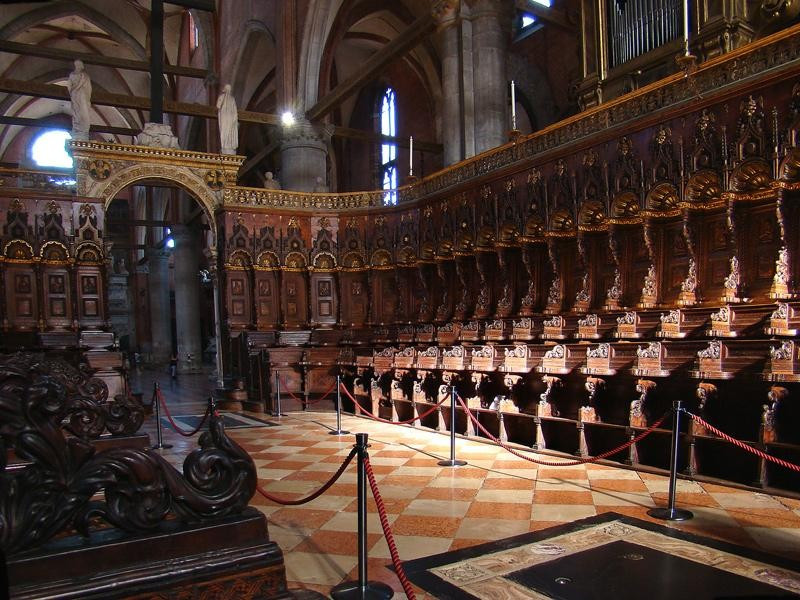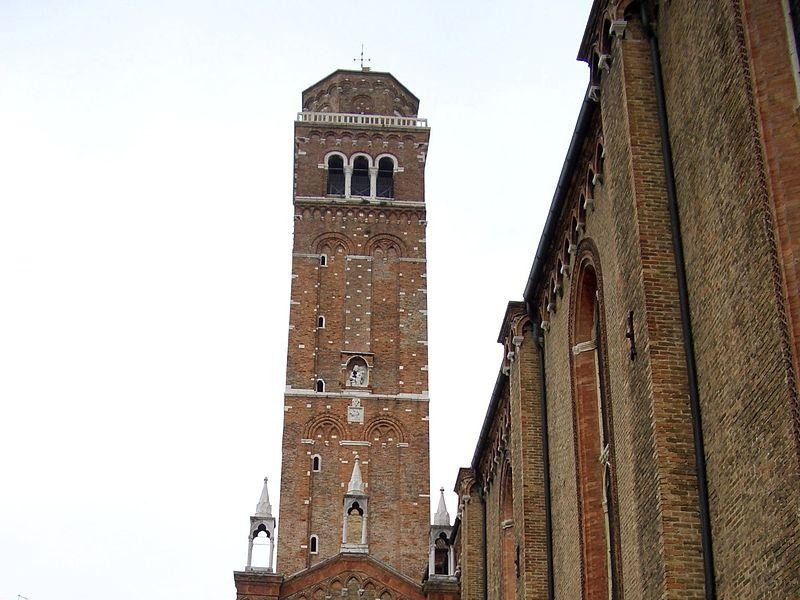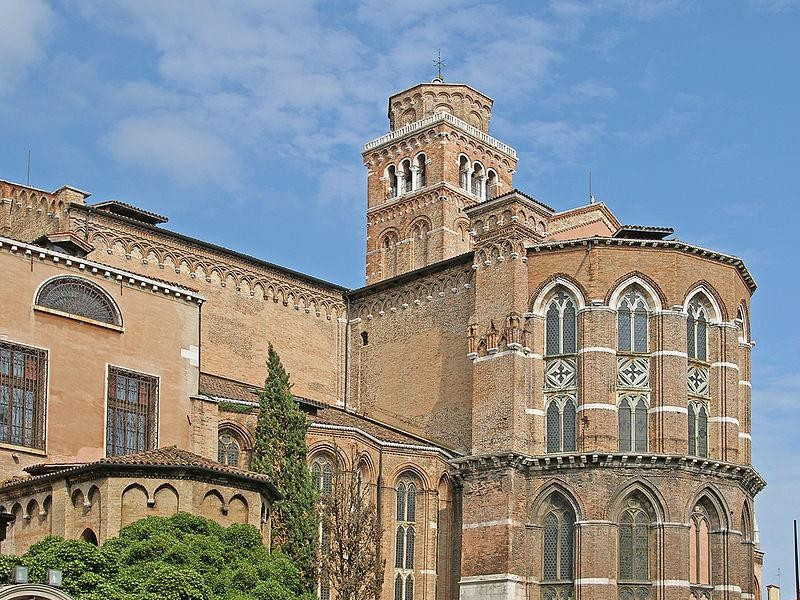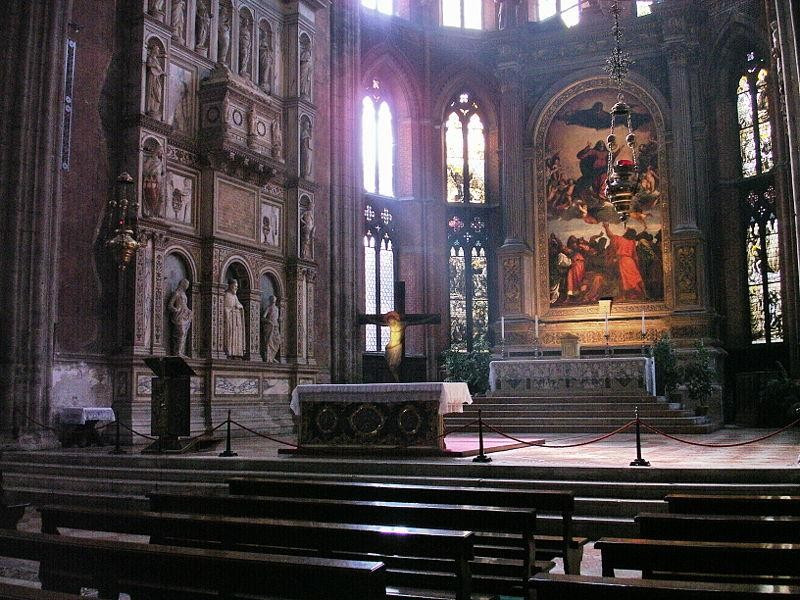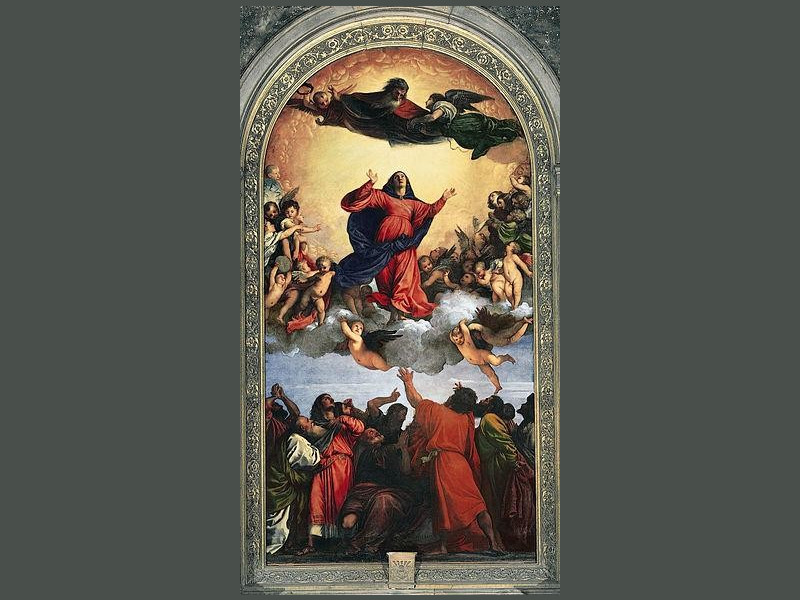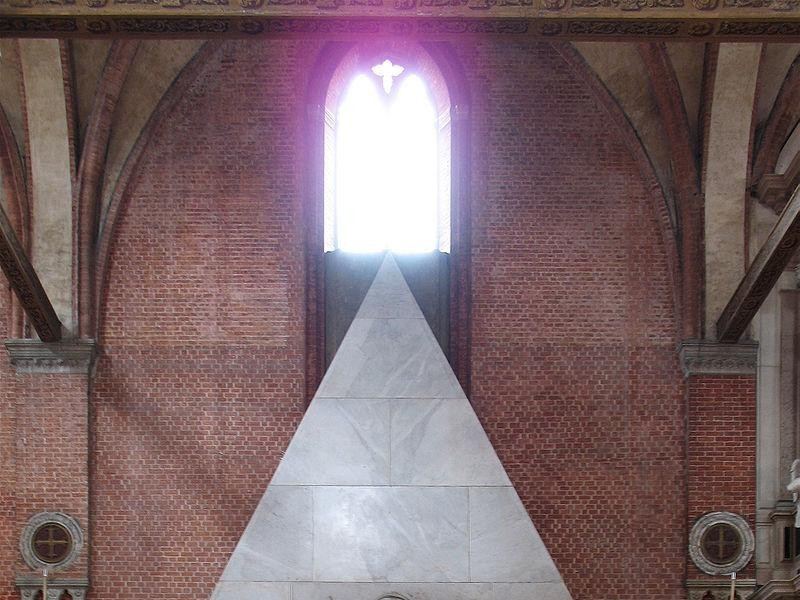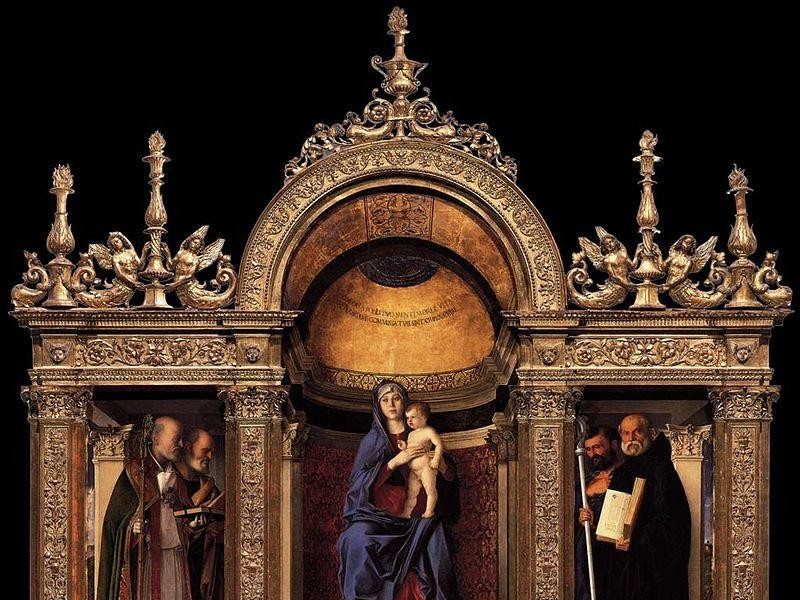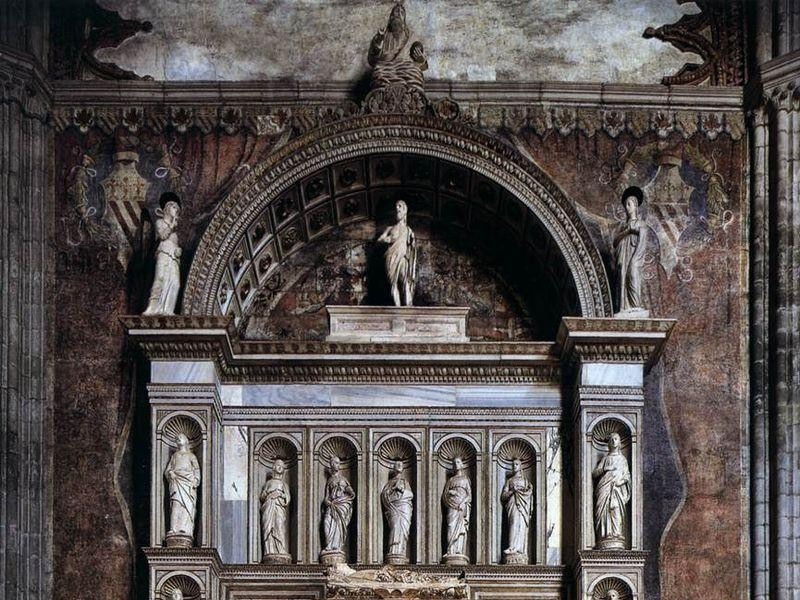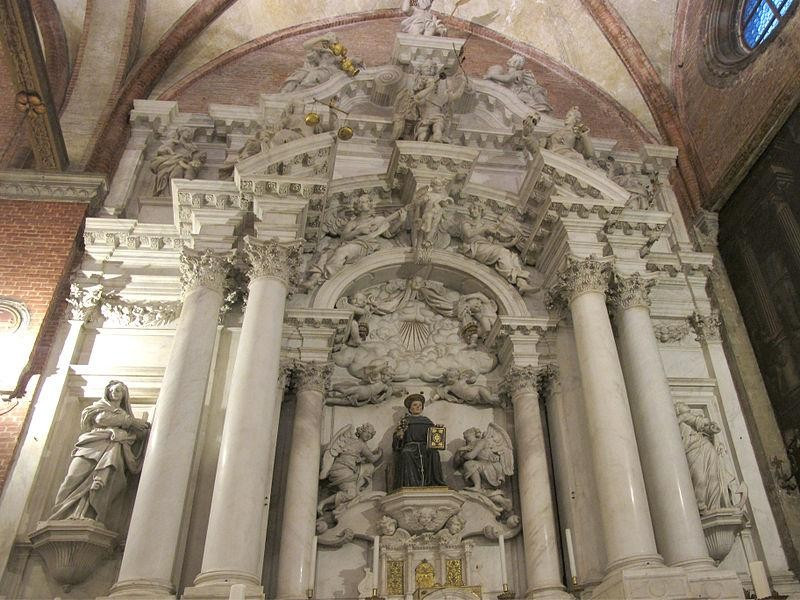Basilica di Santa Maria Gloriosa dei Frari
St. Maria Gloriosa dei Frari Basilica is situated on the Campo dei Frari, in the San Polo district. The plant is a Latin cross, in Venetian Gothic style in brick and Istrian stone, three naves with pointed arches resting on six columns on each side, connected by chains and wooden crates. At its core, has 17 monumental altars and hundreds of works of art, many tombs of personalities linked to Venice, including the same Titian. The first stone was laid in 1250. In about eighty years, the Church is too small and is expected to reverse its architectural structure, turning around the apse and bringing the main front in the direction of the channel. The building, in the following years, proceeded slowly, so that the facade was finished only in 1440. To give a new impulse was the Pesaro family, to which, in 1478, was granted the Sacristy which family chapel and burial place: was the ninth straight apse, pentagonal, finished the main altar and the altarpiece decorated with the famous "Assumption", by Titian, and in the aisle the altar of Pesaro, the eponymous blade. The interior is divided by 12 pillars, pointed arches that support the tax related to wooden structures. Upon entering, on the right, there is the St. Anthony's altar, a project by Baldassare Longhena since 1673, while the statues by Josse Le Court. On the altar there is the altarpiece "Madonna Enthroned with Child surrounded by Saints", triptych by Giovanni Bellini (1488), which still retains its original frame, carved by Jacopo da Faenza. On the left side you can see the Mausoleum of Doge Niccolò Tron, by Antonio Rizzo. Leaning against the north side of the Basilica, the First Cloister, almost square, surrounded by a sixteenth-century portico with rounded arches supporting a terrace balustrade. The rich sculptural decoration is the work of the beginning of the eighteenth century. The Second Cloister is by Sansovino, supported by 32 pillars.
